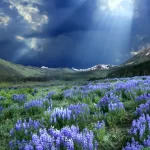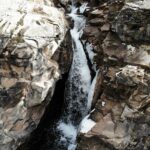The seasonal kaleidoscope of spring and winter might obscure one thread of nature’s intricate web of life. This underappreciated hero is the mud season, which occurs when the earth transforms from a frigid winter into a warm spring. An unruly and uncomfortable break could actually be rather appealing, who would have thought? Let’s delve into the mud season’s unexpected allure and find out why it’s become so popular recently.Let’s read below”Who Knew Mud Season Would Be Charming”.
The Dance of Transformation:
Mud season usually occurs in the late winter or early spring when the soil gets too wet from the rain and snow. As it melts, the once-frozen ground becomes a soft, malleable surface that offers possibilities and threats alike. The landscape undergoes breathtaking transformations, creating an environment that seems disorderly at first glance but is actually a display of the intricate dance of nature.
The Canvas of Earthy Tones:
One of the most endearing aspects of mud season is the shifting colour pallet it gives to the surroundings. As the snow melts and the mud takes front stage, a spectrum of earthy tones emerges. When the landscape changes from deep browns to lush greens, it creates a stunning visual contrast. A work of art symbolising the promise of regeneration and renewal that spring brings is created out of the muddy terrain.
Who Knew Mud Season Would Be Charming?
Mud season is actually rather endearing, despite its repulsive image. As the grip of winter loosens, the landscape transforms into a stunning display of earthy tones, resembling a painting on canvas. A lovely symphony is created by the rain and the squelching mud, which enriches the scenery.
During mud season, people rally around each other to help each other overcome obstacles and rejoice in successes. By casting doubt on the necessity of predictability, it fosters an environment that is conducive to spontaneity.
Underneath the seeming disorder, it stands for the recurrent cycle of rebirth and the persistence of nature. Who knew a certain type of beauty could emerge in the midst of the muck? Mud season is surprisingly charming.
The Symphony of Sounds:
Mud season is beautiful to look at and to hear. Mud proceeding boots, downpour pattering delicately, and water streaming musically down newly framed creeks make a relieving and strengthening ensemble of clamors. Despite its chaos, nature is actually a beautiful orchestra playing a symphony of regeneration, as this sight demonstrates.
The Joy of Unpredictability:
The world longs for request and consistency, yet mud season conveys a perfectly measured proportion of turmoil. Because it is unpredictable and makes people feel less in control, muddy terrain fosters spontaneity and encourages people to go with the flow. Sloppy ways give an interesting new aspect, outlining that no excursion is at any point going great and that the most paramount encounters can emerge from the most startling of exciting bends in the road.
Community and Connection:
In addition to the obvious sensory advantages, mud season also has the added bonus of bringing people closer together. As we face the challenges of a changing season and the joys of travelling on muddy roads together, we develop unique bonds at this time of year. There is greater strength in numbers when you realise that everyone is going through the same ups and downs.
The Mud Season Rituals:
Mud season can be a challenging time for many communities. But many more have developed special rituals and traditions to help them weather the storm and appreciate the season’s beauty. These customs, which might range from group cleanups meant to symbolise solidarity to mud parties that welcome chaos, are fundamental to the local identity. Mud season doesn’t have to be a negative experience for communities to come together and form stronger bonds.
Shared Stories and Laughter:
As individuals fight to get their vehicles through the mud, one positive aspect of mud season is the chance to laugh it off and exchange anecdotes. The stories are passed down through generations with a mix of laughter and tenderness, and they eventually become part of the local folklore. When communities find joy in their shared struggle, what may be a source of frustration becomes a wellspring of communal humour.
Nature’s Resilience and Renewal:
Beyond being an inconvenient and annoying season, mud season provides a lasting example of nature’s resilience and cyclical renewal. A potentially fertile habitat lies beneath the surface filth, ready to be planted.
The Ecological Importance:
Although it may be unpleasant for humans for a brief period, mud season is an essential component of the natural cycle. Precipitation and melting replenish groundwater levels and provide plants with essential moisture. Critical to the well-being of ecosystems, this mechanism ensures the survival of native plant and animal species.
The Symbolism of Transformation:
Mud season is a metaphor for the shifting tides of life. Just as the Earth goes through a crucial yet chaotic phase right before spring, so do people go through periods of disorder and change. The significance of change and the reality that advancement isn’t always peachy can be learned from mud season.
Conclusion:
After thinking of mud season as an annoyance, I had no idea it would be so significant and endearing. Beneath the surface muck is a realm of ecological importance, social relationships, sensory delights, and aesthetic value. The unpredictable and transformative mud season invites us to embrace the unexpected.
Like the land during mud season, there is always a chance for fresh growth, change, and beauty to emerge even in the middle of life’s muckiest obstacles.I hope you like reading”Who Knew Mud Season Would Be Charming”.






